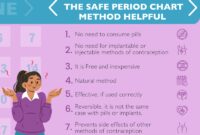How To Remove Mold From Basement – Learn about basement mold, basement mold removal, and how to prevent basement mold growth.
Mold can grow anywhere you can find oxygen, moisture and organic matter, and is particularly fond of damp and humid areas of the home, so it’s no surprise that basement mold is a common problem for homeowners. .
How To Remove Mold From Basement

Basement mold is often the result of a source of moisture leaking foundation or condensation from appliances are common culprits. One of the first steps to preventing mold in your basement is to make sure your basement is free of moisture and does not support a damp and humid environment where mold can thrive.
Fungus/mold On Basements Floor Joists
If basement mold is already a problem in your home, there are many options for basement mold control and removal. Depending on the extent and severity of the problem, and the type of mold, you may need to explore professional mold removal options. In particular, cases of severe toxic black mold growth may require professional treatment.
For non-toxic mold species and less severe mold growth, there are many DIY solutions for basement mold prevention and control. After removing mold-covered debris, such as drywall, insulation, carpeting, or subflooring, hard surfaces can be treated with commercial products containing ammonia and bleach. Removing basement mold from tiles or linoleum can also be done with vinegar or a solution of borax and water.
Basement mold is a common problem, but by understanding how to identify problem areas and prevent and control mold growth, you can avoid the potentially costly and unhealthy spread of basement mold.
A finished basement is a renovation project that you can enjoy twice: for extra living space, and again for resale when you’ve paid off most of the project.
How To Prevent Mold In The Basement + 13 Basement Mold Tips
Carpet can be a difficult flooring option for basements due to its natural ability to absorb water. But with the right guidance, it is possible to have a comfortable basement floor.
By increasing living space without increasing square footage, a basement renovation can be a budget-friendly option if a home extension isn’t an option. Find out what basement remediation is, who can help and what you can expect to pay.
Waterproofing a basement can prevent structural damage, improve air quality, reduce utility bills and make a finished basement a possibility. Learn about common basement water problems, what’s involved in fixing them, and how much you can expect to pay.

Do you want to finish the basement and turn it into extra living space? Learn the steps and costs required to turn cinderblock into walls.
How To Remove And Prevent Black Mold On Windows
Providing a safe place in bad weather is important for the family’s safety and security. Get tips on how to make a disaster kit and set up a safe room before a tornado or hurricane hits.
If the pillars in your home are all functional and without style, you can dress them up. Learn how to install a simple wood wrap to turn boring columns into a cool architectural feature.
Make your clothes last longer and target stubborn stains by hand washing items like bras, underwear, tights, sweaters, baby clothes and more.
8 Household Items That Can Instantly Update Your Home, According to Potter and Designer Jonathan Adler August 17, 2023 Basement mold removal is important for many reasons. Exposure to mold in the home has been linked to a variety of health problems, from mild breathing problems and allergic reactions to serious and even fatal conditions such as pneumonia and bleeding in the lungs. If you have mold in basement areas, it can quickly spread to other areas of the home, increasing health risks and requiring extensive and expensive mold remediation. Addressing basement mold immediately protects your health and your home.
How To Prevent Mold In Your Basement
By understanding why mold can grow in basements, you can take steps to prevent it. Mold develops in basements for many reasons, including:
Before you begin the process of removing mold from your basement, make sure you have found all the parts of the mold. Mold often grows in hard-to-find places, such as under carpets, inside walls and inside heating, ventilation and air conditioning ducts. Follow this link to learn more about how to find hidden mold. If you want to make sure you don’t notice mold, you can have a professional inspect your home. Many mold professionals offer free home inspections. In a moment we will tell you how to plan one.
Remove anything not affected by mold from the work area before starting. The mold removal process causes mold spores to spread, and if you’re not careful, you’ll end up spreading the mold to unaffected areas and making matters worse. Any objects that cannot be moved away from the work area should be covered with heavy plastic sheets. If the carpet or other floor in the workplace is mold-free, cover it with plastic wrap to keep mold spores off the floor.

If only part of the basement is affected by mold, you will want to block off the work area from the rest of the basement so that the mold does not spread to other areas during the mold removal process. Use two to four heavy plastic sheets to divide the work area.
Mold In Your Basement
Of course, make sure you have personal protective equipment before handling moldy materials or working around mold. This includes disposable gloves (latex or vinyl), an N-95 or N-99 face mask, a disposable shoe cover, and a disposable hair cover. You can buy disposable coveralls, or just wear trousers and long sleeves that you wash in hot water as soon as you finish working. If mold removal takes more than a day—and mold removal often takes several days or more—you’ll need a new set of personal protective equipment each day.
The mold removal process first involves removing all moldy materials that are not sufficiently clean. Such items can include upholstered furniture such as sofas, mattresses, paper, books, cardboard boxes, carpets and even plaster. Since it is almost impossible to remove mold from porous materials, they must be discarded and replaced.
Before carrying moldy materials up and through the house, the items should be properly wrapped in heavy plastic sheeting or placed in heavy plastic garbage bags. In this way, you do not accidentally spread mold to other parts of the house. Of course, if the basement has its own entrance, use it instead of bringing molds from home.
After removing all materials that are not sufficiently clean, mold should be removed from non-porous surfaces such as tile, concrete, metal and glass. Mold can be removed from most non-porous surfaces with an antifungal cleaner and a scrub brush. You can read about mold removal products here.
Tips For Dealing With Water Damage, Mold And Mildew
Removing mold from HVAC is complicated and not a do-it-yourself project for most homeowners. If there is mold in your HVAC system, you need to call in an experienced professional with all the necessary equipment.
If you’re feeling overwhelmed by the basement mold removal process, that’s understandable. It can be a huge job. If you think you may need help with the job, we suggest you schedule a free consultation with a mold professional.
An experienced mold remediation professional will visit your home, inspect for mold and advise you on the work to be done. There is no cost and no obligation on your part. To find qualified mold removal professionals offering free consultations and inspections in your area, just follow the link. Fungi such as mold occur naturally in our indoor and outdoor environments. . Most mushroom species are relatively safe. Some fungi such as yeast and mushrooms are even edible. However, there are a few that can be dangerous to our health, especially when there are many of them in our internal environment. It is important to identify these poisonous mushrooms and treat them in the safest and most effective way.

While many people are aware of the dangers of black mold in basement environments, few are concerned about the appearance of white mold. White mold is just as common as black mold. However, many homeowners are not sure whether they should be concerned about its presence or not.
Things You Can Do To Stop Mold And Flooding From Damaging Your Basement
White mold, like black mold in basement environments, thrives in moldy areas. It has a white appearance that makes it easy to identify. However, many homeowners are unaware that they are dealing with white mold even though they have found mold on furniture, textiles, food, plants, carpets and other organic materials.
White mold often changes color over time. It can be white, green, black, gray or almost any other color. The mycelium can grow deep into the structure of the organic material it affects. While white mold poses less of a health risk than black mold in basement environments, it can still cause health problems if not treated soon.
Homeowners often confuse white mold with mold. This is because they have a powdery appearance. They are
Remove mold in basement, remove mold from basement, remove mold from basement walls, how to remove mold from concrete basement walls, remove mold basement walls, how much to remove mold in basement, cost remove mold basement, mold in basement how to remove, how much does it cost to remove mold from basement, remove mold basement, how much to remove mold from basement, cost to remove mold from basement


